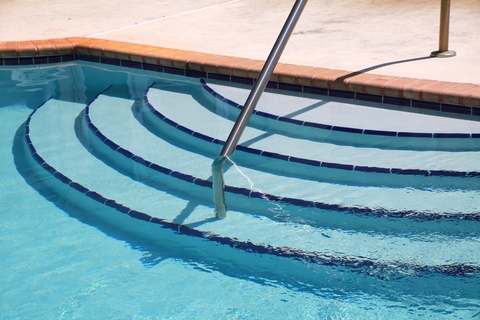Swimming is one of the best exercises around for overall health. It increases your heart rate, builds endurance and muscle strength, and it does not stress your body like some other exercises.
Unfortunately, even the best swimmer can be at risk for drowning. According to the Centers for Disease Control & Prevention, an average of ten people die in the U.S. from unintentional drowning every day. 1 in 5 are children 14 or younger. Nearly 80% of people who die from drowning are male. Drowning is the second leading cause of unintentional injury for death among children and the fifth for people of all ages.
Drowning is also a major concern among senior citizens. While many seniors know how to swim, they may be on medications that make them unsteady or disoriented in the heat or they may experience hypothermia in cold water. Two-thirds of senior drowning victims were alone when the incident occurred, either in a bathtub or a pool. Heart disease and heart attacks are a key physical factor that increases the risk of a drowning incident among older adults.
Here are some essential water safety tips from fromSwimming Hall of Fame (ISHOF). While these mainly address children they apply to anyone.
- Teach children water safety and swimming skills as early as possible.
- Always brief babysitters on water safety, emphasizing the need for constant supervision.
- Appoint a “designated watcher” to monitor children at all times.Never assume someone else is watching a child in a pool area.
- Equip doors and windows that exit to a pool area with alarms.
- Install a poolside phone, preferably a cordless model, with emergency numbers programmed into speed-dial.
- Post CPR instructions and learn the procedures.
- Keep rescue equipment poolside. Don’t wait for the paramedics to arrive because you will lose valuable life-saving seconds. Four to six minutes without oxygen can cause permanent brain damage or death.
- Keep a first aid kit at poolside.
- Install four-sided isolation fencing, at least five feet high, equipped with self-closing and self-latching gates, that completely surrounds the pool and prevents direct access from the house and yard.
- Maintain constant visual contact with children in a pool or pool area. If a child is missing, check the pool first; seconds count in preventing death or disability.
- Don’t use flotation devices as a substitute for supervision. Never allow a young child in a pool without an adult.
- Don’t leave objects such as toys that might attract a child in the pool and pool area.
- Never prop the gate to a pool area open.
- Don’t rely on swimming lessons, life preservers, or other equipment to make a child “water safe.”
- Don’t leave out items offurniture where a child could use them to climb into a fenced pool area (or seniors can trip).
If you are an older adult
- Consult with your medical practitioner before you start any extensive pool exercises.
- Install a rail or pool stairs to make it easier to enter/exit a pool. Do not rely on standard pool ladders.
- Avoid alcohol which canimpairyour judgment, balance, coordination, and your body’s ability to stay warm.
- Avoid swimming in water that is too cold.
- Have a swimming or pool buddy (for allages).
Can you recognize the signs that someone is drowning?
You may not realize someone is drowning.The Instinctive Drowning Response – so named by Francesco A. Pia, Ph.D., explains why there is very little splashing, no waving, and no yelling or calls for help. A person who is drowning is simply in survival mode.
Except in rare circumstances, people who are drowning cannot physiologically call out for help. When someone is gasping for air they cannot speak. While they may be able to pull themselves up momentarily above the surface of the water, they are not above the water long enough to exhale, inhale and yell for help.
Someone who is drowning also cannot wave for help. They cannot voluntarily control their arm movements, as they instinctively extend their arms laterally to press down on the water’s surface to try to leverage their bodies and lift their face out of the water.
Signs someone may be drowning:
“¢ Head low in the water, mouth at water level
“¢ Head tilted back with mouth open
“¢ Eyes glassy and empty, unable to focus
“¢ Eyes closed
“¢ Hair over forehead or eyes
“¢ Body is upright and vertical, but there is no leg kick
“¢ Hyperventilating or gasping
“¢ Trying to swim in a particular direction but not making headway
“¢ Trying to roll over on the back
Thank you toLife Saver Pool Fencefor sharing these tips. Here is their free downloadable pool safety guide.Guide

If you like these tips please share them with somone you care about. #fearlessfabulousyou










